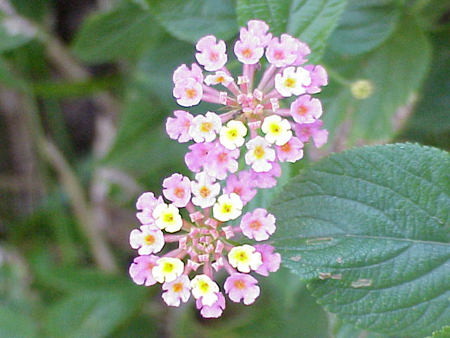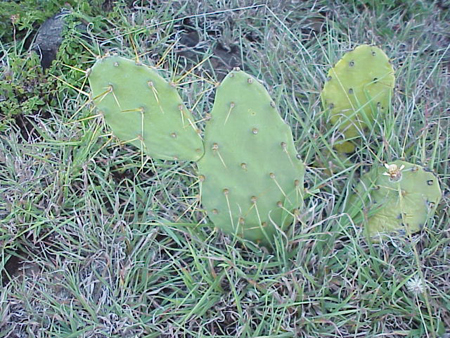|

A pink-flowered form of Lantana camara.
|
The earliest intentional biological control of a weed was the use of
the cochineal mealybug Dactylopius ceylonicus against the cactus Opuntia
vulgaris in southern India in 1863 and in Sri Lanka in 1865 (Tryon
1910). Cochineals were used in several countries to produce a red dye, but
this was the first time they were used to control their host cactus, which
had become a weed.
The first significant program of classical biological control,
involving the import of agents following a search in the country of origin
of the weed, was the program against Lantana camara in Hawaii.
In 1902, the entomologist Koebele, who had previously been responsible for
the successful control of cottony cushion scale Icerya purchasi
on citrus in California, was employed to search for insects attacking
lantana in its native range in Mexico. Twenty three different insect
species from Mexico were shipped to Hawaii, of which 14 were released and
eight of these established to give adequate control of lantana in most
areas (Waterhouse and Norris
1987).
The next major program was the successful control of the prickly pears
(Opuntia
species) in Australia (Dodd
1940). Huge areas of valuable land were being progressively
overrun by prickly pears, introduced to grow cochineal and as hedges or
drought fodder. In 1912, two scientists were sent overseas to search for
control agents and five agents were introduced between 1913 and 1914. The
cochineal Dactylopius ceylonicus successfully controlled the
drooping tree pear, Opuntia vulgaris, but the other major pear, Opuntia
stricta, continued to spread.
|

A young prickly pear plant (Opuntia stricta)
|
In 1920, the Commonwealth Prickly Pear Board was set up, with the sole
aim of attempting to control the prickly pears biologically. The Board
Headquarters were in Brisbane, in a converted house at the site of the
Alan Fletcher Research Station. Entomologists were based for several years
in Mexico and the southern USA, where the cactus originated, and in
Argentina where other related prickly pears occurred. A total of 48
different insect species were imported for testing in Brisbane, 12 of
which were released and established. The most important was the moth
Cactoblastis cactorum, introduced from Argentina in 1925. At the time,
60 million acres (24 million hectares) of valuable land had been infested
by the cactus. By 1933, only a few years after the first release of the
cactoblastis moth, the last big cactus areas had been destroyed. Ever
since, the cactus continues to be controlled by the moth, with only
occasional small outbreaks due to unusually dry weather which favours the
cactus over the moth. These are controlled as soon as wetter summers
return.
The enormous success of the prickly pear program led to requests for
the moth from other countries, and cactoblastis was introduced to South
Africa and the West Indies, as well as other smaller countries. In nearly
all areas, the moth established easily and rapidly controlled the pest
cacti, though it is more successful against some species than others. In
the West Indies, the moth was first introduced in the 1960s, and spread
slowly north and west until in 1989 it was found in Florida in the
mainland USA (Bennett and Habeck
1996; Pemberton
1995). Here it threatens
native cacti and is regarded as a serious pest. It can be expected to
continue spreading into Mexico and the western USA.
|

